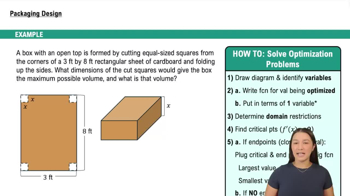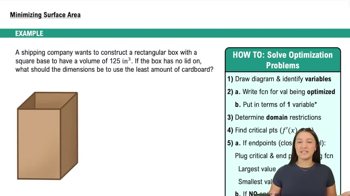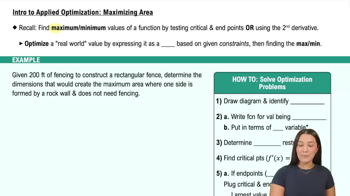Finding Extreme Values
In Exercises 1–10, find the extreme values (absolute and local) of the function over its natural domain, and where they occur.
y = 𝓍³ + 𝓍² ― 8𝓍 + 5
 Verified step by step guidance
Verified step by step guidance Verified video answer for a similar problem:
Verified video answer for a similar problem:



 5:58m
5:58mMaster Finding Extrema Graphically with a bite sized video explanation from Patrick
Start learning